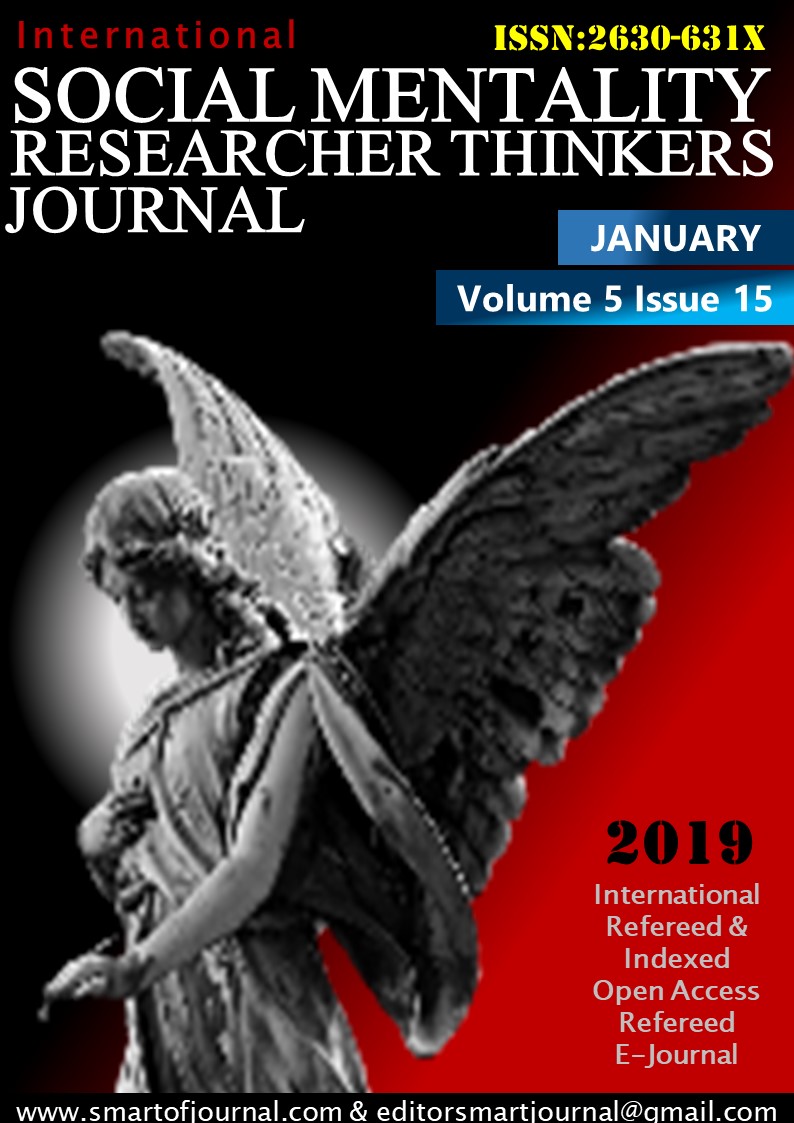Author :
Abstract
Değişen dünya koşullarında bir yandan nüfusun artması, diğer yandan iletişim ve teknolojinin gelişmesiyle yeni meslekler ve iş kolları ortaya çıkmıştır. Daha çok vasıf gerektiren bu işler, işverenlerin işgücü tercihlerinde de kendini göstermiştir. Rakiplerine karşı rekabet edilmek için verimliliği artırmanın ön koşul olduğu bilincinde hareket eden işverenler, işgücü talep ederken eğitimli (diplomalı) bireyleri tercih eder duruma gelmiştir. Araştırmanın amacı gelişen teknoloji ile birlikte, işverenlerin işgücü talebinde eğitimin oynadığı rolü ortaya koymaktır. Bu bağlamda Türkiye’de 2014-2017 yılları arasındaki on iki aylık veriler kullanılarak eğitim seviyesi le işgücüne katılım arasındaki ilişkinin ampirik analizi yapılmıştır. Ampirik analizler ‘PASW for Windows version 18’ ile yapılmıştır. Araştırma sonucu, elde edilen bulgulara göre; eğitim düzeyine göre iş gücüne katılım oranı ortalamaları arasında anlamlı farklılık tespit edilmiştir.
Keywords
Abstract
In the changing world conditions, new occupations and business lines have emerged with the increase of population and the development of communication and technology on the other hand. These jobs, which require more skills, have also manifested themselves in employers' labor force preferences. Employers who are aware of the fact that it is a prerequisite to increase productivity in order to compete against competitors, have come to the preference of trained (diplomaed) individuals when demanding labor. The aim of the research is to reveal the role of education in employer demand in labor force with developing technology. In this context, an empirical analysis of the relationship between participation at the educational level and labor force is made by using twelve months of data between the years of 2014-2017 in Turkey. Empirical analyzes were performed with ‘PASW for Windows version 18’ According to the findings, there was a significant difference between the average level of participation in the workforce and the level of education.
Keywords
- Aceleanu, M. I. (2012). “Links Between Education, Employment and Quality of Life. The Case of Romania”,
- Aceleanu, M. I. (2012). “Links Between Education, Employment and Quality of Life. The Case of Romania”, Management and Marketing Challenges for the Knowledge Society, 7(4), 717-730.
- Akça, H., Ela, M. (2012). “Türkiye’de Eğitim, Doğurganlık ve İşsizlik İlişkisinin Analizi”, Maliye Dergisi, (163), 223-242.
- Aksoy, H. H. (1998). “Relationship between Education and Employment: How Do Employers Use EducationalIndicators in Hiring? Results from a Participatory Observation”, Paper presented at the World Council forCurriculum and Instruction Region VI, North American Chapter Interdisciplinary Conference (Ottawa, Ontario, Canada,October 1-3)
- Bedir, E. (2002). “Yirminci Yüzyılda İstihdamın Artan Önemi ve Eğitim-İstihdam İlişkisi”, Kamu-İş; 7(1),1- 12.
- Ceritoğlu, E. & Okan E. (2015). “İşgücüne Katılım Oranı Öngörüleri”, TCMB Ekonomi Notları, (7),1-10.
- Çalışkan, Ş. (2007). “Eğitim-İşsizlik ve Yoksulluk İlişkisi”, Sosyal ve Ekonomik Araştırmalar Dergisi, 7(13), 285-308.
- Dahiru, T.(2008). “P – Value, A True Test of Statistical Sıgnıfıcance? A Cautionary Note”, Ann Ib Postgrad Med., 6(1), 6-21.
- Dayıoğlu, M. & Kırdar, M. G. (2010). “Türkiye’de Kadınların İşgücüne Katılımında Belirleyici Etkenler ve Eğilimler”, DPT, Çalışma Raporu, (5), 1-82.
- Garrouste, C.; Kozovska, K. & Arjona, P. E. (2010). “Education and Long-Term Unemployment”, MPRA Paper 25073, University Library of Munich, Germany, 1-21.
- İzgi, B.B.(2012). “Genç İşsizliği ve Eğitim İle Olan İlişkisi”, Elektronik Sosyal Bilimler Dergisi, 11(41), 295- 310.
- Karahan, A.(2009). “Demografik Farklılıkların İş Gücü Verimliliğine Etkisi”, Selçuk Üniversitesi Sosyal Bilimler Enstitüsü Dergisi, (21), 269-281.
- Kavak, Y. (1997). “Eğitim, İstihdam ve İşsizlik İlişkileri”, Hacettepe Üniversitesi Eğitim Fakültesi Dergisi, (13), 21-26.
- Moono, H. & Neil, R. (2013). “Education and Employment in Zambia: Evidence from a Scoping Exercise, International Growth Centre”, Working Paper:1-43.
- PASW® Statistics 18 Brief Guide, http://bayes.acs.unt.edu:8083/BayesContent/ 02 Ekim 2018.
- Prause, J. (2016). “Bildung und Beschäftigung in Sozial-, Erziehungs- und Pflegeberufen – im Spannungsfeldvon Professionalisierung und Prekarisierung”, Dissertation These, Fachbereich Erziehungswissenschaft und Psychologie der Freien Universität Berlin.
- Rands, A. (2002). “The Relationship Between Unemployment and Education: The Inverted U-Shaped Hypothesis for the Brazilian Labour Market”, Working Papers 35, Datamétrica Consultoria Econômica.
- Riddell, W. C. & Song, X. (2011). “The Impact of Education on Unemployment Incidence and Re-employment Success: Evidence from the U.S. Labour Market”, IZA DP No. 5572.
- Sayın, F. (2011). “Türkiye’de 1988-2010 Döneminde Eğitim ve Büyümenin Genç İşsizliğine Etkisinin Analizi”, DEÜ SBE Dergisi,13(4), 33-53.
- Winkler, K. (2012). “Albert Einstein in Switzerland: The Education of the Most Famous Swiss American” Swiss American Historical Society Review, 48(3), 1-17.
- Yamak, R.; Abdioğlu, Z. & Nilcan, M. (2012). “Türkiye’de İşgücüne Katılımı Belirleyen Faktörler: Mikro Ekonomik Analiz”, Anadolu Üniversitesi Sosyal Bilimler Dergisi, 12(2), 41-58.
- Yenilmez, F. & Kılıç, E. (2018). Türkiye’de İşgücüne Katılma Oranı-İşsizlik Oranı İlişkisi: Cinsiyet ve Eğitim Düzeyine Dayalı Bir Analiz, Eskişehir Osmangazi Üniversitesi İİBF Dergisi, 13(2), 55-76.
